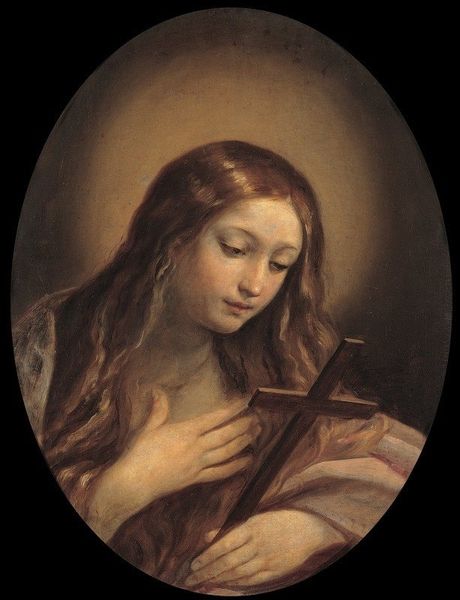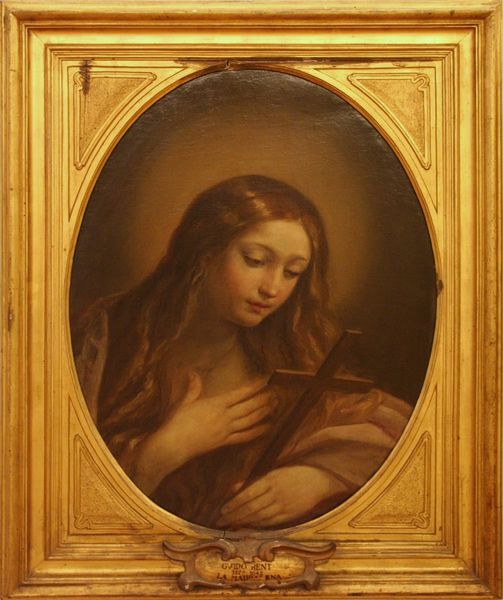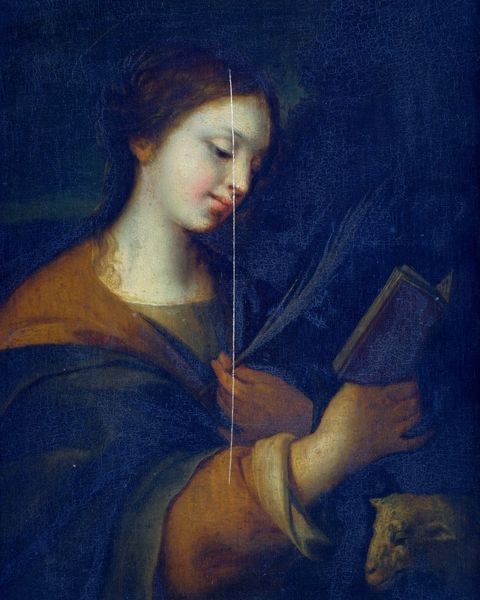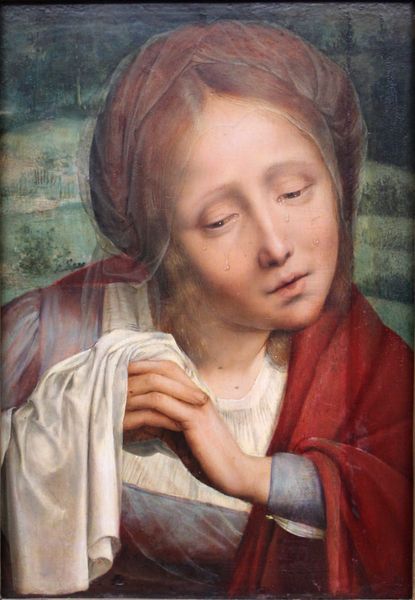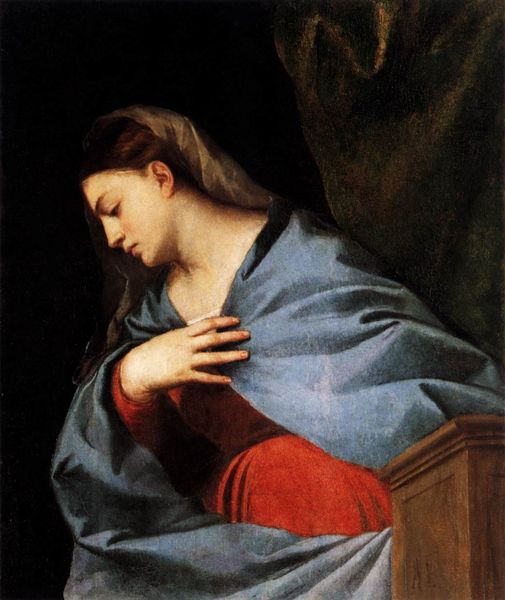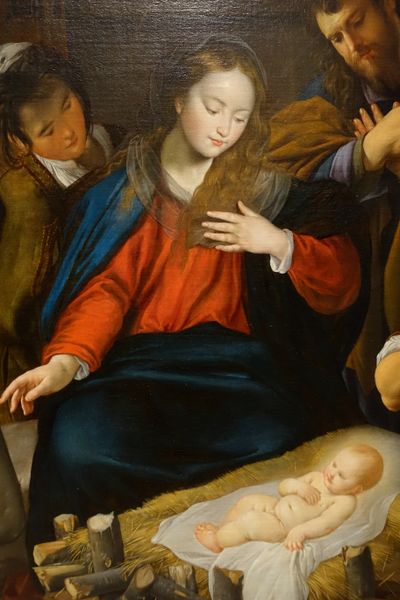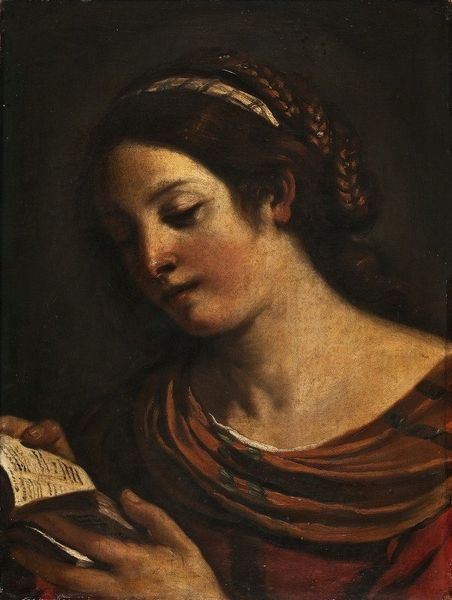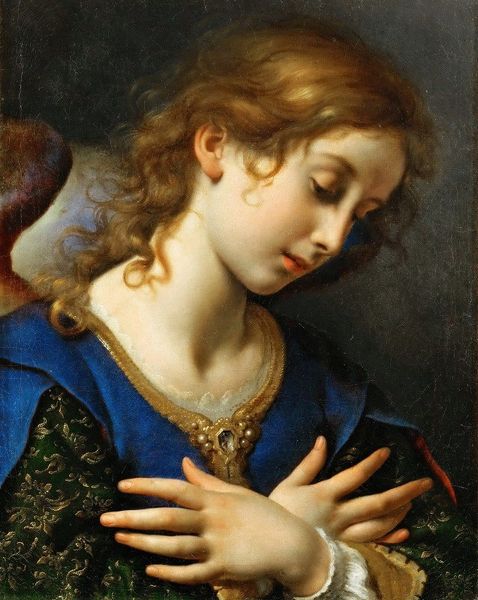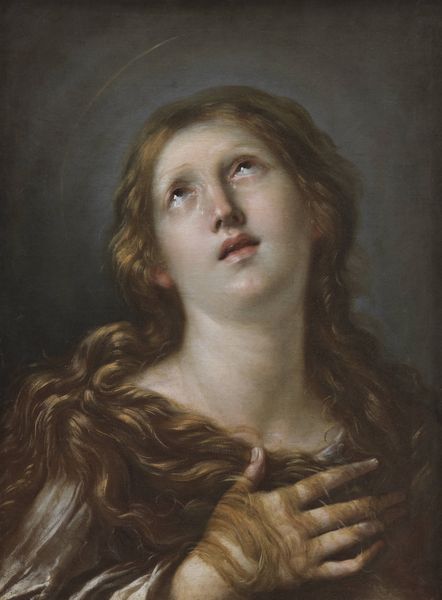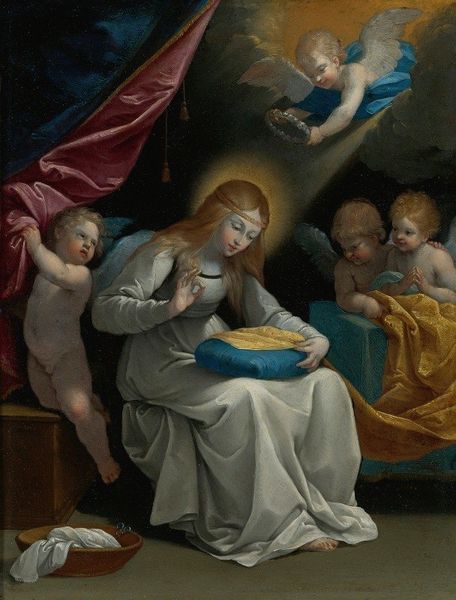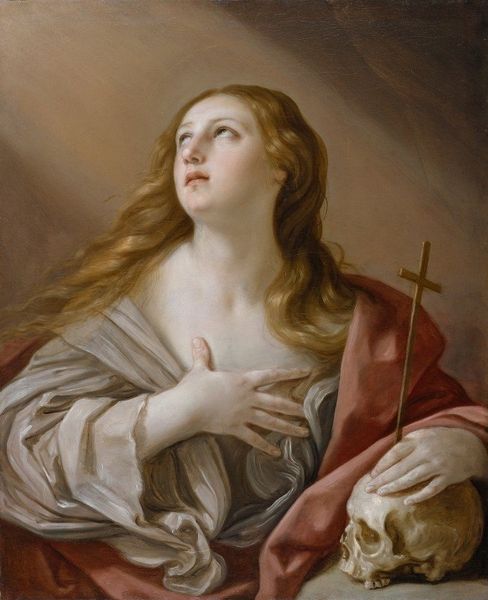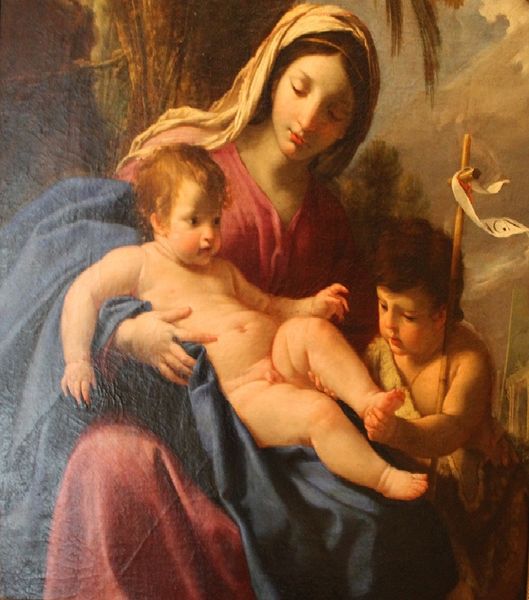
Copyright: Public domain
Curator: It feels like dusk—a peaceful melancholy settles over this painting. Editor: Indeed. Before us is Giuseppe Mazzolini's "The Annunciation (after Carlo Maratta)," painted in 1846 using oil paint. It offers a glimpse into a pivotal moment in religious history. Curator: Right, Mary's reading, bathed in a soft, internal light. The angel, though, is sort of bursting into the scene up top, from the clouds, announcing something that will totally change her life. I'm drawn to that book, though. It's so open and present in her hands. You can almost smell its pages...do you feel that? Editor: I note how the Baroque influence informs the work. See how the composition employs dynamic diagonals and tenebrism, that pronounced contrast of light and dark, particularly framing Mary’s contemplative figure, adding gravity to the subject and theatricality. It definitely pulls the eye to certain details. Curator: The backdrop gives a real feeling of narrative depth. What do you think Mary's thinking in that exact moment? What would she make of all the commotion? Editor: We see a juxtaposition of textures: the smooth, almost porcelain-like finish of Mary's face versus the looser, more expressive brushwork describing the angel. This contrast enhances the distinction between the earthly and divine realms portrayed. The angel is nearly exploding into existence, an incredible burst of movement above her composed tranquility. Curator: It really captures the weight of a huge change entering ordinary life. A single person's entire world altering, almost violently, to accept its role in some grand divine story. You know, I can relate to that feeling… that odd sense of something crashing in that demands more of you. Editor: It really encapsulates an interesting meeting between worlds, the calm material, with something beyond description in artistic language. It uses a moment of personal reflection, turning into something of absolute and universal significance. Curator: The best stories, I think, always make sure you notice your own presence inside them. I'll think of that next time I find myself surprised and unprepared, maybe it'll encourage a certain amount of acceptance. Editor: It highlights the intrinsic value of art's formal aspects as critical elements of how art communicates concepts to a larger viewing public.
Comments
No comments
Be the first to comment and join the conversation on the ultimate creative platform.
